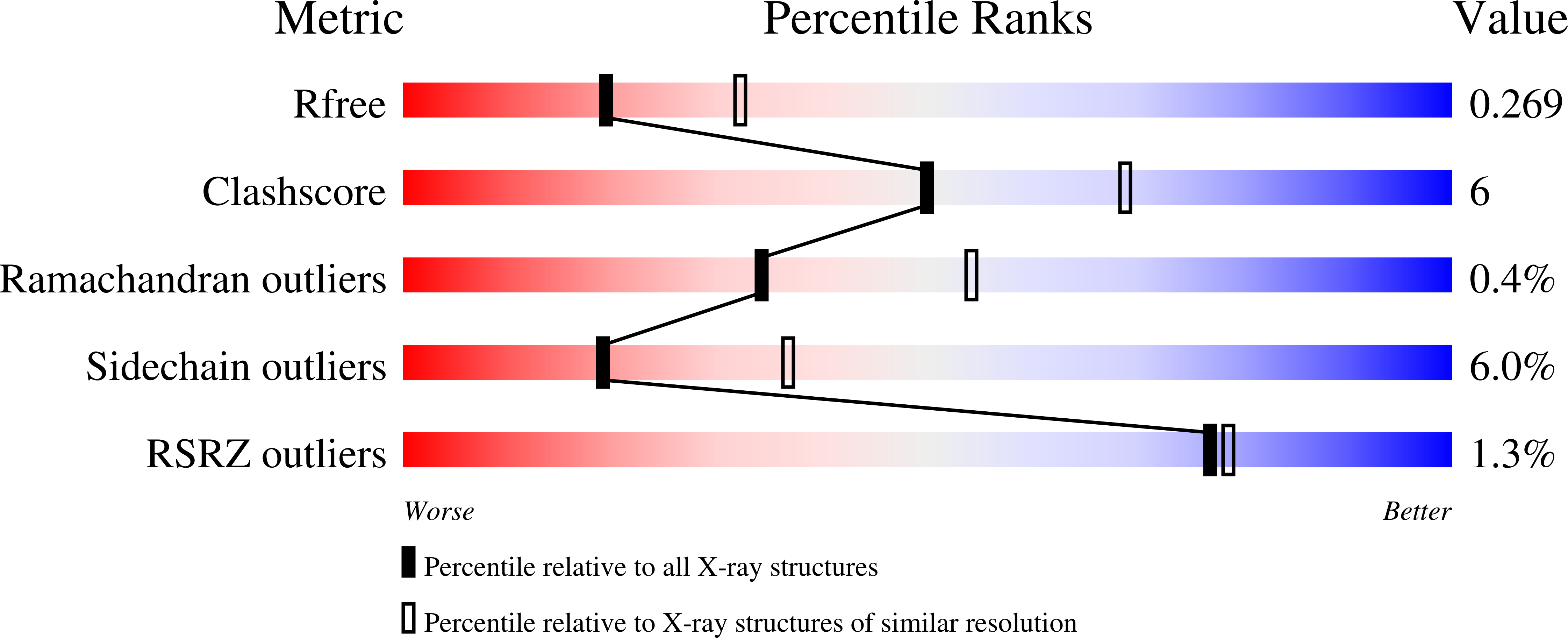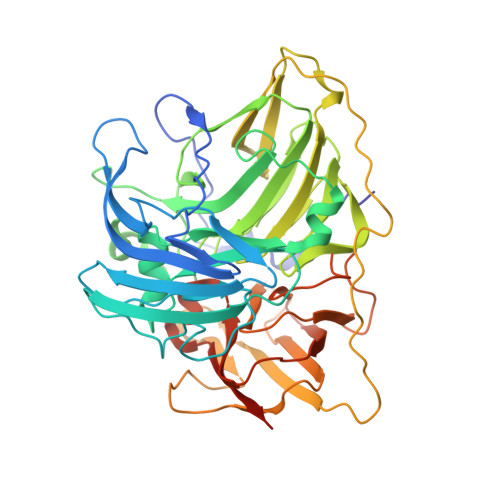Structural analysis and biochemical properties of laccase enzymes from two Pediococcus species.
Olmeda, I., Casino, P., Collins, R.E., Sendra, R., Callejon, S., Huesa, J., Soares, A.S., Ferrer, S., Pardo, I.(2021) Microb Biotechnol 14: 1026-1043
- PubMed: 33635570
- DOI: https://doi.org/10.1111/1751-7915.13751
- Primary Citation of Related Structures:
6XIZ, 6XJ0, 6Z0J, 6Z0K - PubMed Abstract:
Prokaryotic laccases are emergent biocatalysts. However, they have not been broadly found and characterized in bacterial organisms, especially in lactic acid bacteria. Recently, a prokaryotic laccase from the lactic acid bacterium Pediococcus acidilactici 5930, which can degrade biogenic amines, was discovered. Thus, our study aimed to shed light on laccases from lactic acid bacteria focusing on two Pediococcus laccases, P. acidilactici 5930 and Pediococcus pentosaceus 4816, which have provided valuable information on their biochemical activities on redox mediators and biogenic amines. Both laccases are able to oxidize canonical substrates as ABTS, ferrocyanide and 2,6-DMP, and non-conventional substrates as biogenic amines. With ABTS as a substrate, they prefer an acidic environment and show sigmoidal kinetic activity, and are rather thermostable. Moreover, this study has provided the first structural view of two lactic acid bacteria laccases, revealing new structural features not seen before in other well-studied laccases, but which seem characteristic for this group of bacteria. We believe that understanding the role of laccases in lactic acid bacteria will have an impact on their biotechnological applications and provide a framework for the development of engineered lactic acid bacteria with enhanced properties.
Organizational Affiliation:
ENOLAB, Institut de Biotecnologia i Biomedicina (BioTecMed), Universitat de València, Valencia, Spain.















